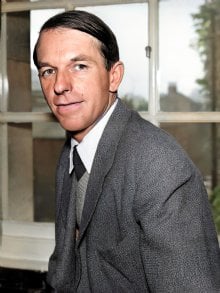In this paper, Sanger describes his work in determining the amino acid sequence of insulin and discusses the implications of this discovery for the understanding of protein structure and function.
 Frederick Sanger, a British biochemist and two-time Nobel laureate. Discover his groundbreaking work on insulin, DNA, and famous quotes.
Frederick Sanger, a British biochemist and two-time Nobel laureate. Discover his groundbreaking work on insulin, DNA, and famous quotes.
More about Frederick Sanger